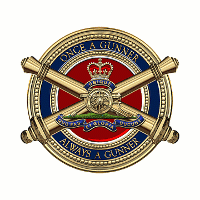Ham Stephen – Soldier, Footballer, Gentleman.
Ham was a Randwick boy, born and bred. It was fitting that his burial service was conducted at St Jude’s Church Randwick on the 26th of June 2009.
He grew up in Randwick, lived there most of his life, and in bygone days played first grade football with the Rugby Union Club – the “Galloping Greens”. Football had always been an important part of his life.
His Army life started in 1939 as a member of the 1st Medium Brigade, an artillery unit located at Randwick. In May 1940 he transferred from his militia brigade to and AIF unit which had just been formed. It was called the 2/1st Medium Artillery Regiment. The regiment was made up of some 700 to 800 men who came from all walks of life: permanent soldiers, public servants, plumbers, taxi drivers, salesmen, railway and road workers, timber cutters, lawyers, doctors, solicitors, accountants, bank officers etc etc.
After some initial training at Ingleburn, the regiment moved to Cowra in NSW and then to Darwin in the Northern Territory. In 1941 the big move came which the regiment had been eagerly awaiting. It was the movement of several Australian Divisions to the Middle East to take on Rommel’s German Army. The troopship they boarded was the Queen Elizabeth.
Whilst undertaking more training later in 1941, Ham was selected to play in an Australian football team captained by Weary Dunlop who was very keen on the game. Their opponents were a team selected from the Palestinian Police Force. The ground was as hard as the hobs of Hell and many injuries were suffered by the players.
In early 1942 the Japanese threat to Australia was becoming serious and, at our Governments insistence our forces in North Africa were brought home to help defend this country. Ham’s Regiment arrived back in April 1942.
On being given some short leave many of the boys married their sweethearts who they had not seen for many months. Ham was one of these, marrying Joyce as soon as arrangements could be made.
At this time the threat of Japanese invasion was very real and the strategy of the Australian High Command was to concentrate on defending this country from around the Brisbane area coming under the command of a body known as the Brisbane Fortress Command.
From Late in 1942 to early 1944 the regiment occupied several campsites around the Brisbane area and changed from artillery weaponry to antiaircraft weaponry. It was natural that whilst around the Brisbane suburbs several of the newly married soldiers arranged for their wives to come up from Sydney and rent a place close to where they were camped. These ladies glorified under the unflattering title of “camp followers”. Joyce was one of that group.
However, as the regiment moved to more remote and isolated areas this arrangement with the wives soon fell apart. In 1944, while the regiment was part of this Brisbane line of defence, Ham was seconded from the Regiment to take up a position in Sydney to train recruits at an Anti Aircraft School. His secondment was for a short specified time and, of all places was located at Randwick. This was an ideal setup for Ham as wife Joyce and their infant daughter lived about a mile from the school. He was able to wangle leave most nights as well as much of each weekend. Oh, what a lovely war!
When the specified time of Ham’s secondment as an instructor was up, a friendly orderly room sergeant made sure that his marching orders to return to his regiment were placed at the bottom of the “outward” tray each day. This cosy arrangement went on for several weeks. Sadly, however it became unstuck because of Ham’s love of football. While Ham was stationed in Sydney he was playing in one of the district football teams each Saturday. During the football season, the Rugby Union Association in Sydney had organised a special match to be played against a Combined Services team. Ham was picked to play in that team. The match was played on Saturday afternoon at North Sydney and Hams team won. Unfortunately for him his photograph appeared in the Sunday paper together with a short story about how well he played. On the following Monday, after arriving at the School, there was a message for him to see the Adjutant. When Ham fronted this officer he was told in no uncertain manner that he had overstayed his secondment period and was to return to his unit immediately.
By this time the regiment had move to the Atherton Tablelands in North Queensland, a place far removed from the Sydney football scene. While on the Tablelands, the regiment had been training in jungle warfare for action contemplated when forces would be sent to northern areas occupied by Japanese forces. With the dropping of atom bombs on two Japanese cities in May 1945 the war soon ended. Subsequently the regiment was demobilised in October 1945.
Many of Hams mates had been together for up to six years and had bonded together as a formidable fighting force. This bonding they called camaraderie.
After the war Ham like so many of his mates resumed their civilian occupations but it was considered that the mateship they had established should not be altogether lost so a social establishment was set up in 1948 which they named the 2/1st Medium Artillery Regiment Association. This association was supported by most of the ex soldiers of their regiment and subsequently their female partners who joined them. Since its formation, Ham had always taken an active part in the association and served in leading roles on the committee. It was rare if ever, to hear a bad word said against him.
Ham was survived by his two daughters Barbara and Wendy who cared for him following the death of Ham’s wife some years earlier. If a reunion of the regiment was to be held in Heaven, the main topic of discussion would be of Ham and football. This would be most fitting because, after all, wasn’t the game invented in Heaven? |


